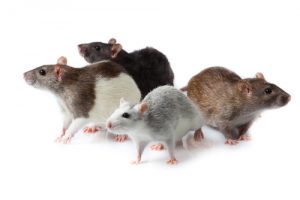“Tall Tales” about Mice and Rats
By Chris Williams on January 24, 2011.
I have been working in the pest control industry for close to thirty years and yet many of the same myths, and assorted “tall tales” about rodents that I heard when I joined the industry still persist today. Here are a few of my favorites:
Myth: “Where I grew up we used to have rats that were as big as cats”
I would only say that could be true depending upon how much you had to drink that night! A typical Norway rat (Rattus norvegicus) is between 13 to 18inches long (body plus tail) and weighs about a pound. Even the much larger muskrat (up to 24 inches long including tail) averages only about two and a half pounds. Now I have pet Maine Coon cats that dwarf most domestic breeds in size, but even my neighbor’s shorthaired cat weighs in at eight pounds.
Myth: Rats and mice have no skeleton, or can collapse their skeleton to fit through almost any size opening.
This is incorrect on both counts. Rats and mice are a vertebrate, which means they do have an internal skeleton just like birds, fish, snakes, humans, etc. Both rats and mice have skeletons of bone and cartilage like we do, but their ability to get through small openings is more a function of their design and lifestyle. They spend their life tunneling through burrows, and they can climb very well too. If a rat can poke it’s nose through an opening to a home or building and determines it’s big enough, it will charge right through. Young rats can get through a hole the size of a quarter. Mice have the same types of capabilities as rats, and can pass through even smaller sized openings.
Myth: Rats & mice that consume rodent bait (rodenticide) will go outside to search for water and die.
This is my all-time favorite ‘tall tale” about rodent behavior. Most biologists seem to agree that rats need to consume water either through their food or directly on a daily basis. Mice, on the other hand, do not need access to free water daily, but are efficient enough to extract all they need even from dry grain. The unfortunate truth is that there is no credible evidence to support this notion of exodus by rodents exposed to anti-coagulant on a quest to find water. Oftentimes, they die in or near their nest.